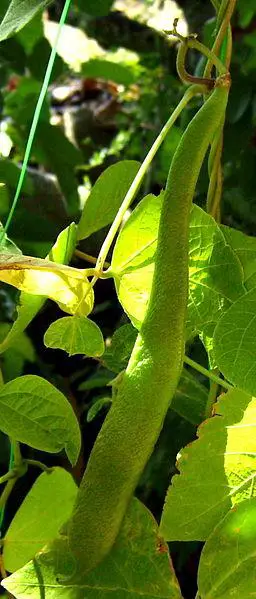Growing Runner Beans

Growing runner beans (Phaseolus coccineus), is one of the most satisfying jobs around the vegetable garden for me, and so this item on how to grow runner beans is born! The reason I am enthusiastic about runner beans is that I am quite impatient by nature, and so can’t wait for the crops to grow. This is where the runner beans come in handy – they grow so fast !
No sooner do you have the frame up, than they are reaching for the stars and in no time producing tasty beans. When planting runner beans, like any other plant really there are however a few steps to follow in order to get the best results.
Soil Conditions:
Runner beans prefer a loamy soil mixed with a good compost mix, however they are a fairly forgiving plant and will grow in many soil types. Since beans take nitrogen from the air and deposit it in the soil, they need less fertilizer than most other plants. Plant in full sun if possible, though some shade will be tolerated. They should be kept away from the wind, as they are likely to suffer from wind damage if too exposed.
Time for planting beans:
The time to plant your runner beans is after the last frost of the season, as runner beans are very susceptible to frost damage. Better to grow from seed in a cold-frame or greenhouse and then plant the young seedlings into the garden area. If there is a danger of a late frost, then it is better to cover at night with a light fleece to protect them.
Preparing for planting:
Before planting your runner beans, it is best to prepare the frame-work that will support them whilst growing. Mostly this is done with a wigwam type of frame, made up from several canes attached at the top and tied around with string. The runner beans are then trained to grow up the canes, securing as they grow. This is slightly different from Peas which will secure themselves with tendrils from the plant.
If planting seedling’s then remove from the pot when they are well rooted, but not pot-bound in the container. Taking a small trowel, dig a hole big enough for the plug and place the plant in the hole, firming around the base with soil.
Planting out under a cloche for the first few weeks of growing will also protect against the frost and give them a quick boost as the soil warms up. This will also protect your young plants from the birds. Pigeon’s in particular can do a lot of damage to a young bean crop, if it is not protected. Another way of protecting the early plants is to cut the bottom of a plastic coke bottle, and place over the plant (make sure you remove the top ). Naturally this system is a bit more difficult if you already have your canes in place, so think ahead to exactly how you plan to proceed.
Rodents just love to nibble on a tasty bean ! Watch out for these and if it is a problem try covering with fleece to distract the mice during the early stages of growth.
Caring for your Runner Beans
Generally speaking runner beans need very little looking after, during the season. Water well when flowering starts in order to encourage growth. For the bushier type of bean plants, nip out the growing tips as they reach the desired height. Watch out for aphids, and take action at the first signs. Aphids can soon get out of control and be the cause of all kinds of plant disease, as well as contaminating your beans with a sticky mess !
need very little looking after, during the season. Water well when flowering starts in order to encourage growth. For the bushier type of bean plants, nip out the growing tips as they reach the desired height. Watch out for aphids, and take action at the first signs. Aphids can soon get out of control and be the cause of all kinds of plant disease, as well as contaminating your beans with a sticky mess !
Harvesting your Runner Beans
All bean crops should be harvested when still young and small, for as they grow they can get quite tough and fibrous. Likewise they are best eaten immediately, or if headed for the freezer they should be blanched and frozen within the first few hours of picking to get the best flavour locked in. Keep harvesting quite frequently, even if you do not need the beans. This encourages growth and ensures a steady supply of fresh succulent runner beans for the table.
